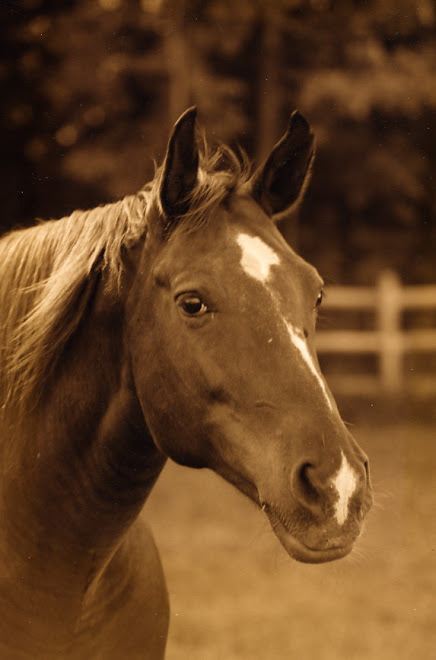"MRSA appears to be an occupational risk factor for large animal veterinarians," noted Maureen Anderson, DVM, DVSc, postdoctoral fellow in the Department of Pathobiology of the University of Guelph in Ontario, Canada.
At the 2008 American Association of Equine Practitioners (AAEP) convention, held Dec. 6-10 in San Diego, Calif., Anderson discussed MRSA biology, prevalence, and recent research. She reported that MRSA can cause many different problems, from superficial skin/soft tissue infections to necrotizing (tissue-killing) pneumonia. Some hospital-associated strains in humans are resistant to multiple classes of antibiotics, leaving very few effective treatment options for people who become infected. There is increasing concern that some strains might ultimately develop resistance to these few remaining antibiotic weapons.
The general human population has an estimated 0.2-3.5% MRSA colonization rate (carrier state), and contact with horses and pigs appears to increase one's risk of MRSA colonization, noted Anderson. Some studies have shown that large-animal veterinary personnel are up to four times more likely to be colonized than the general population; nearly 16% of large-animal veterinary personnel at a veterinary internal medicine conference were colonized, compared to 4.4% of small-animal veterinary personnel. And at the 2006 AAEP convention, 10.1% of the equine veterinary personnel tested were colonized.
Not all types of MRSA are created equal; there are several different strains with different capabilities. The ST398 form, for example, is often associated with food animals in Europe, but it is now also being found in horses. "This type of MRSA seems to readily cross species barriers; it has a high potential for zoonotic transmission (transmissible between animals and humans)," Anderson commented.
In contrast, she reported that CMRSA-5 and closely related strains are most common in horses, but they are fairly uncommon in people in general, suggesting that they might be adapted to survival in horses. The CMRSA-5 type was most common in the AAEP 2006 attendees, present in 54% of the positive subjects.
It seems clear that MRSA can spread from horses to humans. Anderson reported one incident occurring in an equine intensive care unit where contact with a foal colonized with MRSA resulted in skin infections in three personnel and colonization of 10 others. Another incident involved a skin infection of a veterinary resident's tattoo site; the MRSA strain was the same as that in two equine patients the resident had been attending.
MRSA Risk Factors and Prevention
While few studies on MRSA risk factors have been done in horses, Anderson reported that colonization is (logically) a risk factor for active infection. Other equine risk factors for MRSA colonization include:
* Administration of ceftiofur or aminoglycoside antimicrobials in hospitalized horses (this might be related to conditions/weakened immune systems requiring antimicrobials, rather than the antimicrobials themselves).
* On admission to hospitals, additional risk factors include administration of antimicrobials within 30 days of hospital admission; admission to a neonatal intensive care unit or nonsurgical service; and residence on a farm on which a horse was previously diagnosed with MRSA.
* Residence on a farm with more than 20 horses is a risk factor for MRSA colonization of horses in the community.
Luckily, "It seems that the majority of horses are not persistently colonized and will clear the MRSA on their own if re-exposure can be prevented," Anderson said. "Therefore, drug therapy is not advocated unless clinical signs of infection are present."
Instead, quarantine infected or colonized horses and gradually move them to clean herds (or groups) once they test negative to prevent widespread MRSA colonization.
According to the AAEP 2006 study, risk factors for MRSA colonization in veterinary personnel include diagnosis of MRSA colonization or infection within the last year and treatment of a horse diagnosed with MRSA in the last year. Protective factors include hand washing with soap and water between potentially infectious cases and between visits to different farms. Anderson noted that one study showed that alcohol-based hand sanitizers were even more effective at reducing bacterial counts on the hands than antibacterial soap and water. However, she also noted that these are most effective when used on hands that aren't visibly dirty; thus, washing hands before applying hand sanitizers might be the most effective approach.
Treatment
"I cannot possibly emphasize enough how important it is to treat MRSA based on culture and sensitivity results (to identify what drugs will kill the bacteria before treating the infection)," advised Anderson. "Don't crack a walnut with a sledgehammer; vancomycin is not a first-line antimicrobial. MRSA in horses is not at the point it is in human hospitals where the bugs are so resistant to everything that they need vancomycin. In horses we can still use other drugs. Use local therapy wherever possible; wound debridement and lavage can go a long way toward decreasing the amount of antimicrobials used.
"Equine MRSA is not going away; we're going to have to deal with it," she summarized. "We need controlled studies to evaluate risk factors in hospital/community equine populations, and we must increase awareness of its zoonotic potential and the design/use of infectious disease control protocols. Hygiene and barrier protocols (such as gloves, gowns, and boot covers) are the keys."
A new EPA registered eco-friendly product that kills MRSA and other Staph, Salmonella, E Coli, Influenza, HIV, Herpes and much more! It is colorless, odorless
visit: http://www.TheNaturalHorse


 Click Here to Purchase
Click Here to Purchase








No comments:
Post a Comment